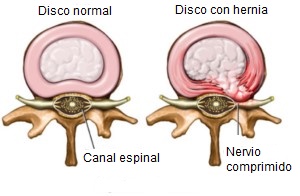
sports and athletic competitionétics have long been a known source of spinal cord injuries.. Back injuries related to sports activities are más common than you think, new cases of this type of injury exceed the 8% In spaña.
Some sports, like weight lifting, high jump, wrestling, diving, karate, fúsoccer and any other sport that isé associated with heavy loads on the back, can lead to spinal fractures.
“Sports and back injuries go hand in hand., but one of the best ways athletes can protect themselves is throughés of educationóno and conscience”
It is essential that any sports team has a staff méI say you have a plan for stabilizationón, In the event of this type of injuryón, to protect the méspinal game.
The athlete must be oriented to rational training, in which the vertebral column adapts to the strés and the increasing charges systemátics: impacts, trace effectsón, includedótorsosón of the exercisesísick.
Index
Types of sports-related back injuries
Spinal injuries are possible when participating in activities físic. The 20% of all injuries that occur in sports involve an injuryón in the lower back or neck.
Back injuries in the lumbar area
The lower back isá subject to great stressón in many sports. This conditionón occurs regularly in sports that use repetitive impact, a twisting motionón the weight load at the end of a range of motion, for instance, to run, playing golf or lifting weights. These and other similar activities, It is very at all times preferable to match a number of websites before choose the one that fits the mostúnmente cause ofñin the lower back.
Lower back muscle strains and ligament sprains can limit athletic performance. The sísymptoms include pain, swollenón, hematomas, soft spot, numbness in the spine and / or extremities. When it's not about, the sísymptoms progressively worsen, sometimes leaving inmóvile the athlete.
Many athletes, flex their spine during prápractice and competition. When the body rotates while the spine isá flexed, a substantial load is placed on the intervertebral discs.
Overloaded discs may start to “slide” and cause an injuryónot known as herniated disc.

Treatment is determined by an orthopedic specialist, since sometimes surgery is neededía. The Best Preventive Measure Athletes Can Take, is to participate in a comprehensive physical therapy program aimed at strengthening and stretching the lower back.
This oneón in the cervical spine
The neck is most often injured in sports that involve contact, for instance, el Fúfootball or rugby, that place the upper spine at risk of injuryón.

Cervical thorns occur when an athlete's head is forced backwards.ás and/or to one side. At this time, cervical nerves may become compressed or overstretched, causing pain that radiates throughés of one of the arms. Injured athletes describe this pain as a “download theéctrica” lasting from a few seconds to minutes.
The best way to prevent cervical spine injuries is throughés de physiotherapy aimed at strengthening the múcervical sculi, tendons and ligaments. Además, wear a tétechnique that allows blocking and adequately addressing the sport to avoid having problems with the cervical spine.
Back injuries in the thoracic spineácat
The middle part of the vertebral column at the level of the torso cageácica is less likely to be injured because it is relatively immóvile and has additional support. Nevertheless, the lesions seen hereí may involve rib fracture and intercostal neuralgia, así such as intercostal muscle strains in sports involving rotationón of the torso, for instance:

- Golf
- Gymnastics
- swimmingón
- Tennis
- Volleyball
- Any weight training with rotationón
- Even Cheerleaders and Dancers
The repetitive movements of torsión, turn and extendón exert an enormous amount of stressés in the véspinal vertebrae. An overloaded spine is prone to smallñthe vertebral cracks, known as stress fracturesés.
The sícommon symptoms of stress fractureévertebral s are pain, swollenón y hematomas. The best way to reduce the síntomas, and alsoén prevent future fractures, is to avoid overtraining or consult a spinal specialist when experiencing anyún síthe apostle, since they ignore these sísymptoms can often worsen the conditionón.
Sessionón sports and back
Not all sportsñon the back. In fact, sports that include exercisesétricos and mixed prevent the development of postural disorders in childrenñthe sane. These create favorable conditions for the formationón of posture and spine in athletes jóyou come, correct existing posture violations and prevent progressionóNo first degree scoliosis.

But, when sports are performed with an asymptomatic loadéthree, the musculoskeletal systeméathlete's attic begins a progressionón of pathol deviationsóExisting logics of posture and spine.
the activity fíexcessively intense physics during sports that require high flexibility, spinal mobility and high load isática, can cause pathological changesólogical in the vertebral bodies and intervertebral discs.
Any pain should be taken as a kind of señto SOS, because they can mean the first clinical signsínicos of an injuryóno back. Therefore, if you feel pain in the spine, you should try to eliminate it from the beginning and do therapeutic gymnastics exerciseséutica.
